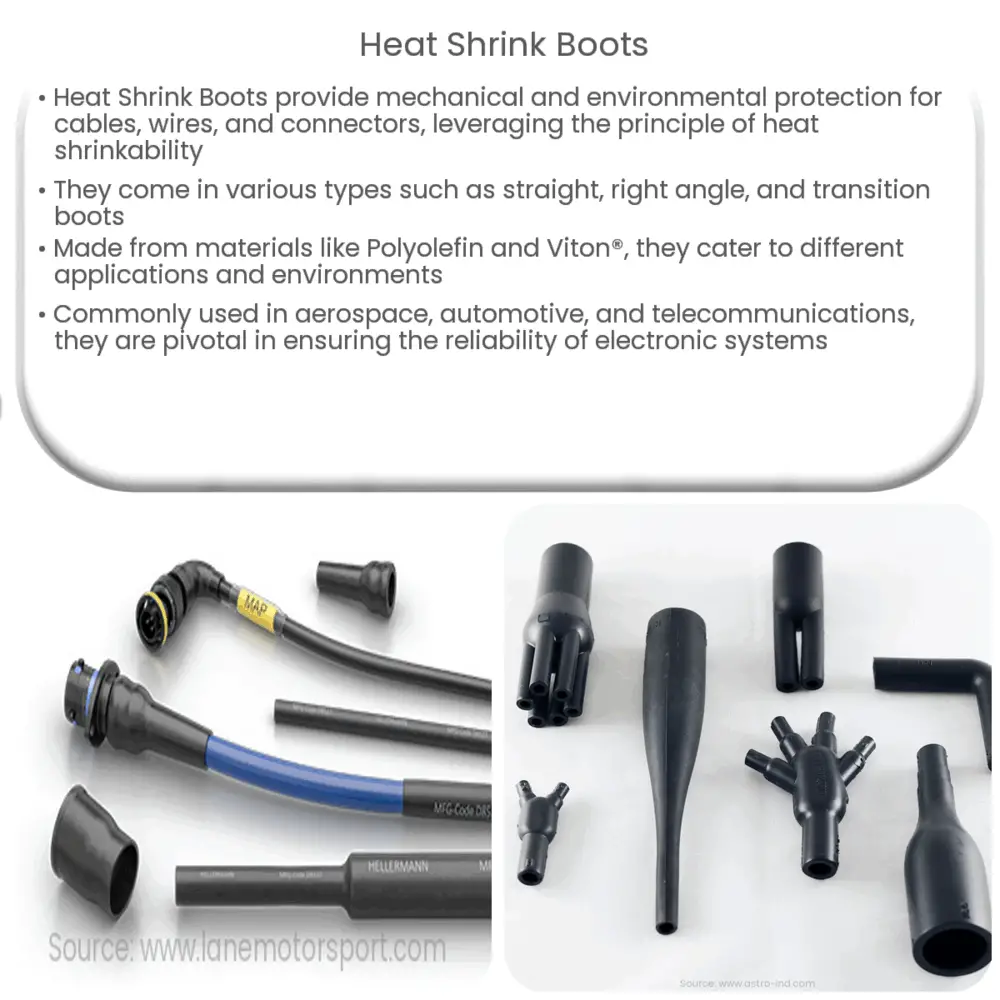Explore the world of heat shrink boots, their types, materials, application in industries like aerospace and automotive, and installation process.

Understanding Heat Shrink Boots
Heat Shrink Boots, also known as heat shrinkable boots, are widely used in a variety of applications across industries due to their unique capabilities. They are designed to provide excellent mechanical and environmental protection, sealing, and insulation for cables, wires, and connectors.
The functionality of heat shrink boots is based on the principle of heat shrinkability. This characteristic is imbued during the manufacturing process, wherein a plastic material is expanded under heat and then cooled. This process conditions the material such that when it is next exposed to heat, it contracts, snugly adapting to the shape of the object it envelops.
Types of Heat Shrink Boots
Material Selection and Properties
Heat Shrink Boots are commonly made from a variety of plastic or elastomeric materials. These include Polyolefin, Elastomer, and Viton®. Each of these materials possesses different physical and chemical properties, making them suited to particular applications and environments. For instance, Polyolefin boots offer excellent electrical and mechanical properties, while Viton® boots exhibit superior resistance to chemicals, oils, and high temperatures.
When selecting a heat shrink boot for a particular application, it is crucial to consider the conditions it will be exposed to, such as temperature, abrasion, exposure to chemicals, or UV radiation. These factors heavily influence the choice of material for the heat shrink boot.
Application of Heat Shrink BootsHeat shrink boots are primarily utilized in industries where wire and cable management is critical. These sectors include aerospace, defence, electronics, automotive, and telecommunications, among others.
Installation of Heat Shrink Boots
Heat shrink boots are typically easy to install. A heat source, like a heat gun, is used to apply uniform heat to the boot, causing it to shrink and adapt to the shape of the cable or connector it is covering. It is crucial to ensure even heating to prevent uneven shrinkage and potential damage to the boot or underlying component.
It’s worth noting that in order to achieve an optimal fit and level of protection, the correct size of the heat shrink boot should be chosen. The boot should be large enough to fit over the connector or cable before heat is applied, and once heated, it should shrink down to a tight fit that provides effective insulation and protection.
Conclusion
In conclusion, heat shrink boots serve a pivotal role in numerous industries by offering dependable mechanical protection and environmental sealing for cables, connectors, and wires. Made from a variety of materials, each suited to specific applications, these boots utilize the principle of heat shrinkability to provide a tight, custom fit. Whether it’s in an airplane, a car engine, or a telecommunication setup, heat shrink boots prove indispensable in enhancing the longevity and reliability of electrical and electronic systems.

